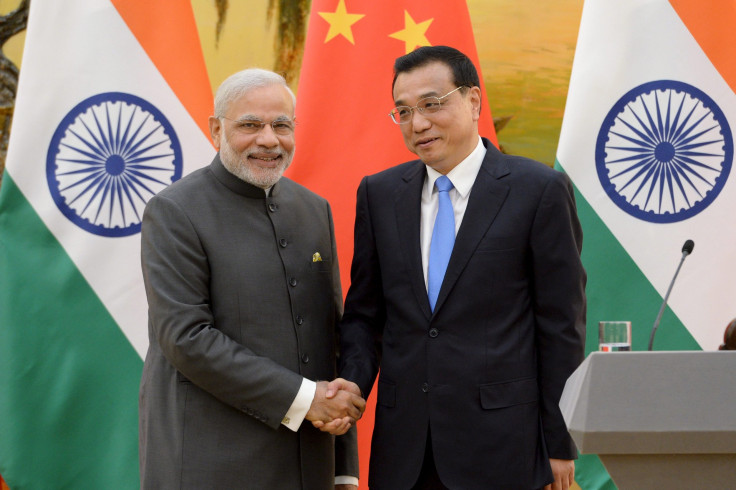India, China Sign Agreements Worth $10 Billion In Sign Of Warming Ties

On the second day of Narendra Modi’s first visit to China as Indian prime minister, the two countries have signed 24 agreements worth an estimated $10 billion, as they seek to invigorate a once distant relationship.
The accords, signed after Modi’s meeting in Beijing with his Chinese counterpart Li Keqiang, cover cooperation in areas including trade, railway development, education, tourism, broadcasting, science and space exploration.
The accords are the latest sign of what officials in both countries have sought to portray as a new era in their bilateral relations, following decades of suspicion over border tensions, India’s links to the West and China’s close ties with India’s traditional rival Pakistan.
Modi himself is seen by some observers as having made an important difference. He encouraged Chinese investment in his home state of Gujarat as the chief minister there before becoming prime minister last year, and he is now keen to bring in Chinese investment and funding for the urban and transport development that he has promised to roll out across the country.
Beijing is also seen to be relatively favorably disposed to Modi, not least for his suggestions that India put more emphasis on its relationships with its Asian neighbors and less on ties with the West. For China, closer ties with Delhi are also a way of reminding the West, and Washington in particular, that Beijing is capable of building alliances around the world – something President Xi Jinping’s visit to Russia's VE Day anniversary celebrations last weekend also demonstrated.
The mood music on this visit has certainly been positive so far. Xi took the unusual step of meeting Modi in the western city of Xi’an, where he arrived on Thursday at the start of his visit. He accompanied the Indian leader to a pagoda famous as a symbol of links between the two countries’ Buddhist traditions, and later hosted him at a banquet.
Following their talks on Thursday, Xi stressed that the two countries’ relationship had “developed steadily," according to Chinese media, and called for enhanced “strategic cooperation" in future.
Modi responded that "India sees China as a great neighbor," and said he believed the relationship can be raised to a higher level.
The two sides clearly still have a ways to go. While they signed unprecedented investment accords worth some $20 billion last year, during Xi’s visit to India, China has grumbled that implementation of the accords has been slow – though there are hopes that Friday’s agreements may help to kickstart some of these projects, including a planned Chinese-built high speed rail line between Delhi and Chennai.
Security tensions between the two sides are not so easily ironed out either – there was a tense standoff on the border last year, around the time of Xi’s visit to India. And a map shown on Chinese TV news as it reported Modi’s arrival this week carefully omitted disputed territory which India says is part of Arunachal Pradesh.
However, at present the two sides seem keen to downplay the issue.
Chinese media reported that during Thursday’s talks Xi said the two sides are “managing the border region well,” while Indian Foreign Secretary S. Jaishankar said that the focus was on “peace and tranquility on the border.”
And China’s Global Times newspaper, while saying that tensions still remained, and a “lack of mutual trust” still affected the relationship, was keen to emphasize that progress was being made. It suggested that “the Western elite doesn’t want to see India and China drawing closer to each other,” but said the two countries were showing that they could be pragmatic. It said it would be “hard for India and China to develop a strategic partnership," but it would “be dreadful for both sides to vie with each other.” And it added that “mainstream society in both nations is reaching a consensus that friendship should walk ahead of the resolution of border disputes.”
Modi himself certainly seemed enthused by his reception, with his aides tweeting his enthusiastic comments about the ‘beautiful temple’ he visited in Xi’an. And he is also reported to have pledged to link India's Act East strategy to China’s policy of expanding its economic influence west through the Silk Road Economic Belt belt policy, though some commentators see the two strategies as potentially conflicting.
Some Chinese experts appear to believe India has now shifted its attitude, and will no longer allow security concerns to restrict development of its relationship with Beijing to the same extent as in the past. Zhao Gancheng of the Shanghai Institutes for International Studies told the China Daily newspaper that India’s elite had now “reached a consensus that to achieve peaceful development, India has to handle the relationship with China well.”
One test of this new enthusiasm will be in the implementation of the agreements signed this week, however – and whether they herald the beginning of a further upgrading of ties, or represent a false dawn.
© Copyright IBTimes 2025. All rights reserved.




















